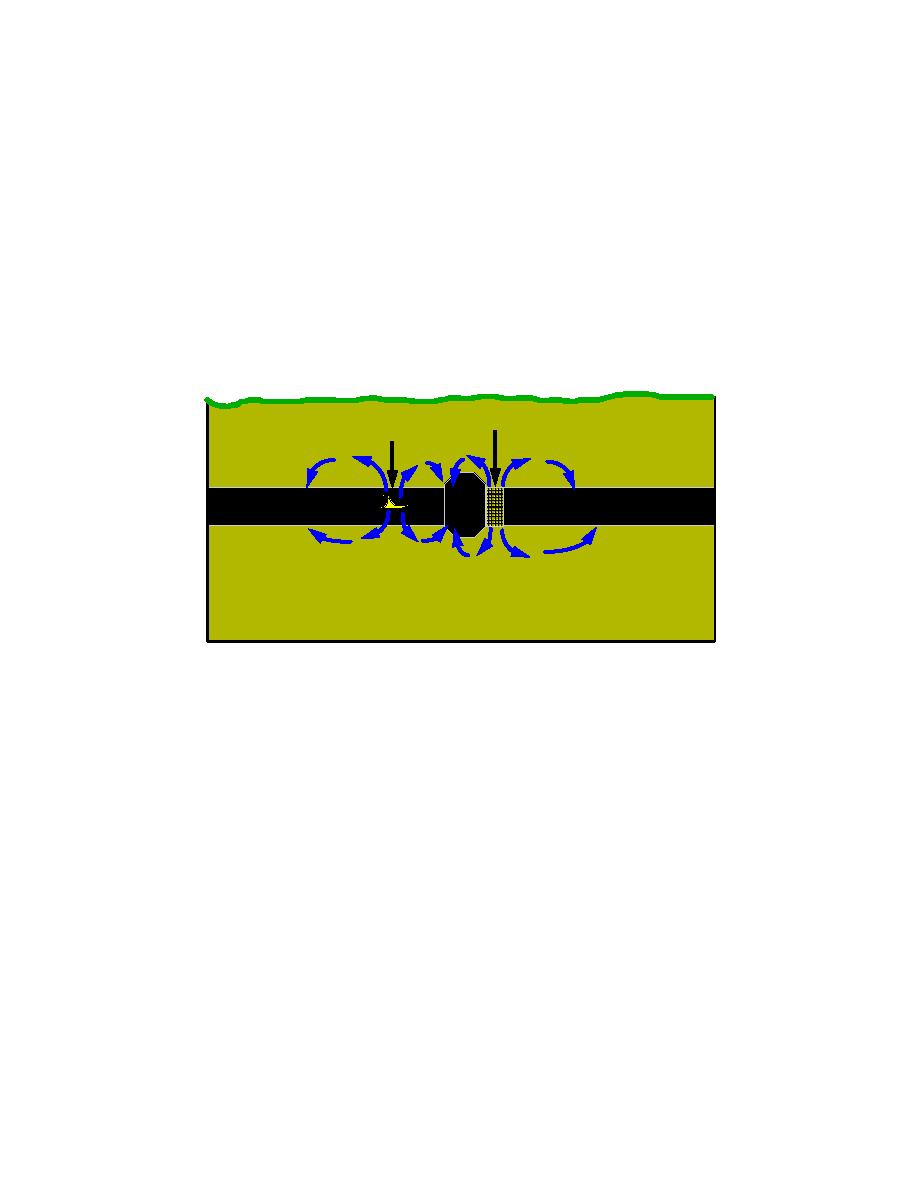
UFC 3-570-06
JANUARY 31 2003
anodic to the surrounding metallic surface. This is similar to the old-to-new syndrome,
where new steel is anodic to the old steel. This electrochemical corrosion cell is set up
by the difference in the electrical potential of the scratched surface compared to the
remaining surface of the structure. Threaded pipe, bolts, marks from pipe wrenches
and other tools, and marks from shovels and backhoes are common examples of this
type of electrochemical corrosion cell. This situation is further aggravated because the
metal thickness is also reduced in these areas.
Figure 2-10. Galvanic Corrosion Cell Caused by Marred and Scratched Surfaces
Threads
Scratch
Cathodic Area
Cathodic Area
Current Flow in the Earth
2-2.3.6
Stressed Metallic Section. Metal that is under stress becomes anodic to
metal that is not under stress. Bolts, bends, structural or mechanical stresses, and soil
movement are common examples. This situation results in the metal shearing or
cracking from the stress long before corrosion has penetrated the entire thickness of the
structure.
2-2.3.7
Temperature. Metal that is at an elevated temperature becomes anodic to
the same metal at a lower temperature. As previously discussed, a more active metal is
anodic to a more noble metal. Since elevated temperature makes a metal more active,
it becomes anodic to the rest of the metal. This electrochemical corrosion cell may
cause accelerated corrosion on metals that are at elevated temperatures.
2-2.3.8
Simultaneous Sources of Corrosion. Each of these previously discussed
types of electrochemical corrosion cells may cause significant corrosion, but in many
cases there are a combination of many different types of corrosion simultaneously at
work to make corrosive situations even worse on the metal surface. Understanding the
actual cause of corrosion is of utmost importance in maintaining a submerged or buried
metallic structure, such as a pipeline or storage tank.
2-13



 Previous Page
Previous Page
